Overview
The article titled "21 KPIs for Sales Success Every Small Business Should Track" highlights the key performance indicators (KPIs) that are crucial for small businesses aiming to enhance their sales performance. We understand that navigating the world of sales can be overwhelming, and tracking metrics such as:
- Monthly Sales Growth
- Average Profit Margin
- Sales Conversion Rate
can offer valuable insights. These insights not only inform strategic decisions but also empower you to drive revenue growth and improve overall business effectiveness.
By focusing on these essential KPIs, you can better understand your business's performance and identify areas for improvement. Imagine how tracking these metrics can illuminate the path to success, making it easier to make informed decisions that resonate with your goals. Together, we can achieve success by embracing these tools and using them to foster growth.
As you consider these indicators, think about how they align with your business objectives. What challenges do you face in your sales process? Reflecting on these questions can help you prioritize which KPIs to monitor closely. Remember, tracking these metrics is not just about numbers; it’s about creating a roadmap for your business’s future, one that leads to greater effectiveness and satisfaction in your work.
Introduction
In the competitive landscape of small business, tracking the right sales KPIs can truly make a difference between stagnation and sustainable growth. We understand that with the increasing reliance on data-driven strategies, small enterprises face a wealth of metrics that can illuminate their sales performance and guide their decision-making processes.
By exploring 21 essential KPIs, this article aims to empower small business owners to harness these indicators to refine their sales strategies and drive revenue growth.
However, amidst the vast array of metrics available, which key performance indicators hold the power to transform your business's sales trajectory? Together, let’s discover the insights that can lead you toward success.
Wayy.ai: Streamline Your Client Acquisition with AI-Driven Automation
Wayy.ai is more than just a platform; it's a caring partner that harnesses advanced AI technology to simplify for small enterprises. We understand the complexities that come with traditional selling techniques, and we're here to help you focus on what truly matters—your core business activities. With a robust suite of services, including a comprehensive marketing playbook and execution strategy, Wayy.ai empowers you to conduct thorough research, identify key value propositions, and create detailed profiles of your target customers. Imagine being able to connect with over 60 potential clients each month, significantly boosting your revenue pipeline without the stress of manual outreach.
This innovative approach not only streamlines the client acquisition process but also aligns with the growing trend of AI automation. Did you know that 25% of small businesses are already leveraging AI to enhance their marketing efforts? As the use of AI continues to rise, Wayy.ai stands out as an essential resource for emerging enterprises like yours, eager to refine their revenue strategies and achieve sustainable growth. Together, we can navigate these challenges and unlock new opportunities for success.
NetSuite: 21 Sales KPIs for Effective Performance Tracking
At NetSuite, we understand the challenges small enterprises face, which is why we highlight 21 crucial sales indicators that you should monitor to ensure effective performance evaluation. These indicators, including Monthly Sales Growth, Average Profit Margin, and Sales Conversion Rate, are not just numbers; they represent opportunities for growth and improvement. By regularly evaluating these metrics, you can gain valuable insights into your revenue processes, identify areas that need enhancement, and make informed decisions that can elevate your overall performance. Together, we can and work towards your success.
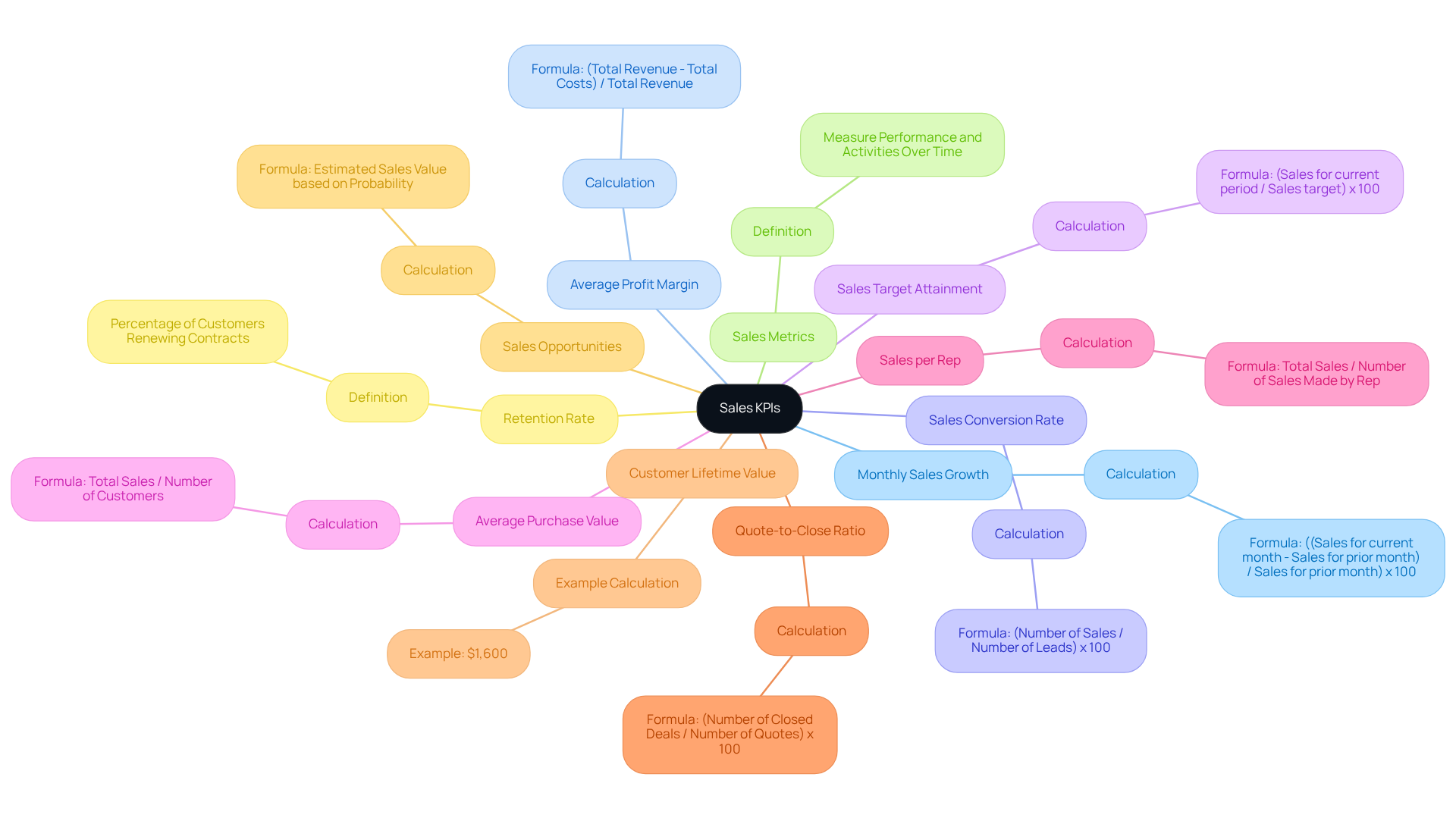
Pipedrive: 20 Essential Sales KPIs for Small Business Success
Pipedrive highlights 20 essential KPIs for sales that small businesses should monitor to achieve success. Among these, the Lead-to-Opportunity Conversion Rate stands out, with the average rate hovering around 12%. This metric is crucial as it evaluates how effectively leads are converted into viable business opportunities, directly impacting revenue growth. For instance, the Aerospace Aviation industry has a lead-to-opportunity conversion rate of just 2.8%, while the Addiction Treatment sector sees a conversion rate of 4.0%. These figures illustrate the variability across different industries and underscore the importance of monitoring this KPI.
Moreover, the Average Deal Size and Cycle Length are essential metrics that provide insights into revenue performance and efficiency. By focusing on these KPIs for sales, small business owners can gain a clearer understanding of their revenue dynamics, identify areas for improvement, and implement strategies that foster revenue growth. Have you considered how actively monitoring your Lead-to-Opportunity Conversion Rates can enhance your outreach efforts? Engaging prospects at the right moment can significantly boost your conversion rates.
Furthermore, expert advice suggests that concentrating on KPIs for sales not only helps in tracking progress but also nurtures a culture of continuous improvement within sales teams, ultimately leading to sustained success. As a practical tip, small business owners can calculate their lead conversion rates by dividing the number of leads converted into opportunities by the total number of leads and multiplying by 100%, as suggested by DemandScience.
Additionally, Wayy.ai users can create more than 60 target client connections each month by efficiently monitoring and enhancing these performance indicators. This reinforces the advantages of . Together, we can navigate these challenges and achieve success.
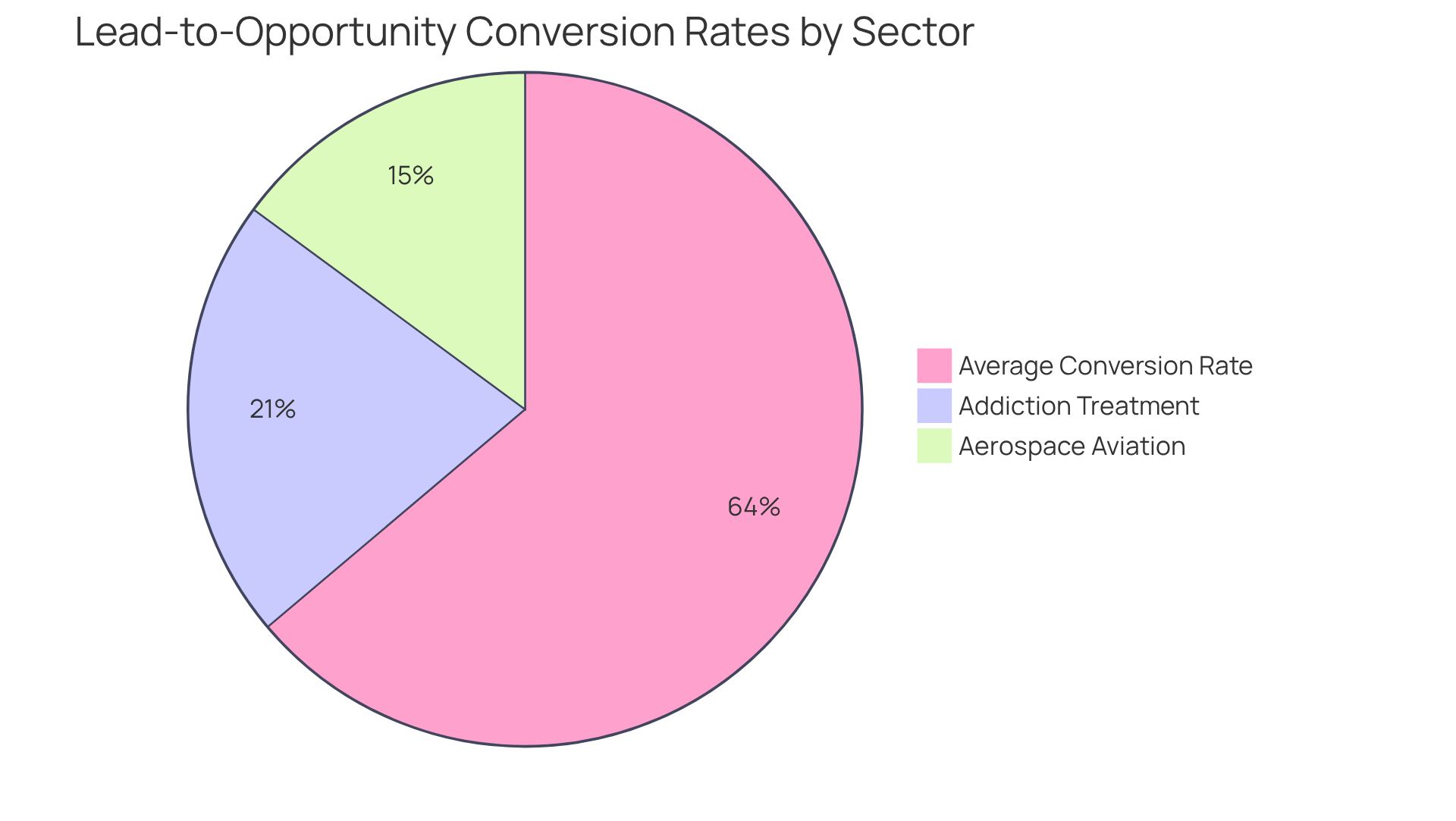
Gong.io: 13 Critical Sales KPIs to Measure Team Performance
At Gong.io, we recognize the importance of measuring team effectiveness through 13 crucial KPIs for sales, including Total Revenue, Quota Attainment, and Participation Rate. By monitoring these metrics, entrepreneurs can gain valuable insights into their team's efficiency and celebrate top achievers. Total Revenue serves as one of for sales, reflecting overall performance and helping businesses assess their financial health. In 2024, the average quota achievement rate for minor enterprise sales groups was reported at 43.14%. This statistic underscores the importance of setting achievable goals and tracking progress. Additionally, the Participation Rate evaluates the engagement level of team members, which is essential for fostering a motivated workforce.
Consider the experiences of small businesses that effectively leverage KPIs for sales to drive growth. For example, a SaaS firm implemented a dashboard to track Total Revenue and Quota Attainment, resulting in a remarkable 25% increase in revenue over six months. This illustrates how data-informed decision-making can enhance marketing strategies. Moreover, expert opinions emphasize that focusing on KPIs for sales not only boosts team effectiveness but also aligns sales initiatives with broader organizational goals, ultimately leading to sustained growth and profitability. By consistently assessing these metrics, owners of modest enterprises can make informed adjustments to their revenue processes, ensuring they remain competitive in a changing market.
Wayy.ai's platform is particularly supportive for local entrepreneurs in monitoring these KPIs. It offers daily email insights that track leads, interest, and conversion rates, simplifying client acquisition efforts and enhancing revenue performance. To fully benefit from these insights, small business owners are encouraged to actively engage with the information provided by Wayy.ai. This proactive approach enables them to make timely adjustments to their strategies and improve overall revenue outcomes. Together, we can navigate the complexities of the market and achieve success.
Cirrus Insight: Key Sales KPIs for Growth and Strategy Enhancement
At Cirrus Insight, we understand the importance of tracking KPIs for sales to foster growth and enhance our strategic planning. Among the most vital metrics are Customer Acquisition Cost (CAC) and Customer Lifetime Value (CLV). CAC reflects the total expense incurred to bring a new customer on board, while CLV measures the total revenue a customer generates throughout their relationship with your business. For small enterprises, maintaining a favorable CAC to CLV ratio—ideally 1:3—is crucial. This ratio indicates that for every dollar spent on acquiring a customer, three dollars are earned in return.
It's important to note that the across different sectors. Many small businesses face challenges in managing these expenses effectively. For example, the average CAC in the construction industry is around $281, while the financial services sector sees an average of $784. Furthermore, the commercial insurance industry has an average combined CAC of $593. By understanding these benchmarks, small business owners can tailor their marketing strategies and allocate resources more efficiently.
Expert insights reveal that enhancing CLV is essential for driving growth. By focusing on improving customer experiences and implementing retention strategies, businesses can increase their CLV, leading to greater profitability. Consider the success stories of companies that actively monitor and enhance their CAC and CLV; they have reported remarkable improvements in revenue performance and customer engagement. For instance, Gorgias achieved a 55% increase in qualified deals by leveraging effective customer retention strategies. Additionally, companies that utilize platforms like Wayy.ai can automate their outreach processes, enabling them to connect with over 60 target clients each month, thus enhancing their revenue pipelines without requiring significant manual effort.
In conclusion, small business owners should prioritize monitoring these KPIs for sales—CAC, CLV, and Sales Growth Rate—to make informed decisions that align with their growth objectives and strengthen their sales strategies. By implementing tools or methods for tracking these metrics, you can further enhance your strategic planning and execution, paving the way for success together.
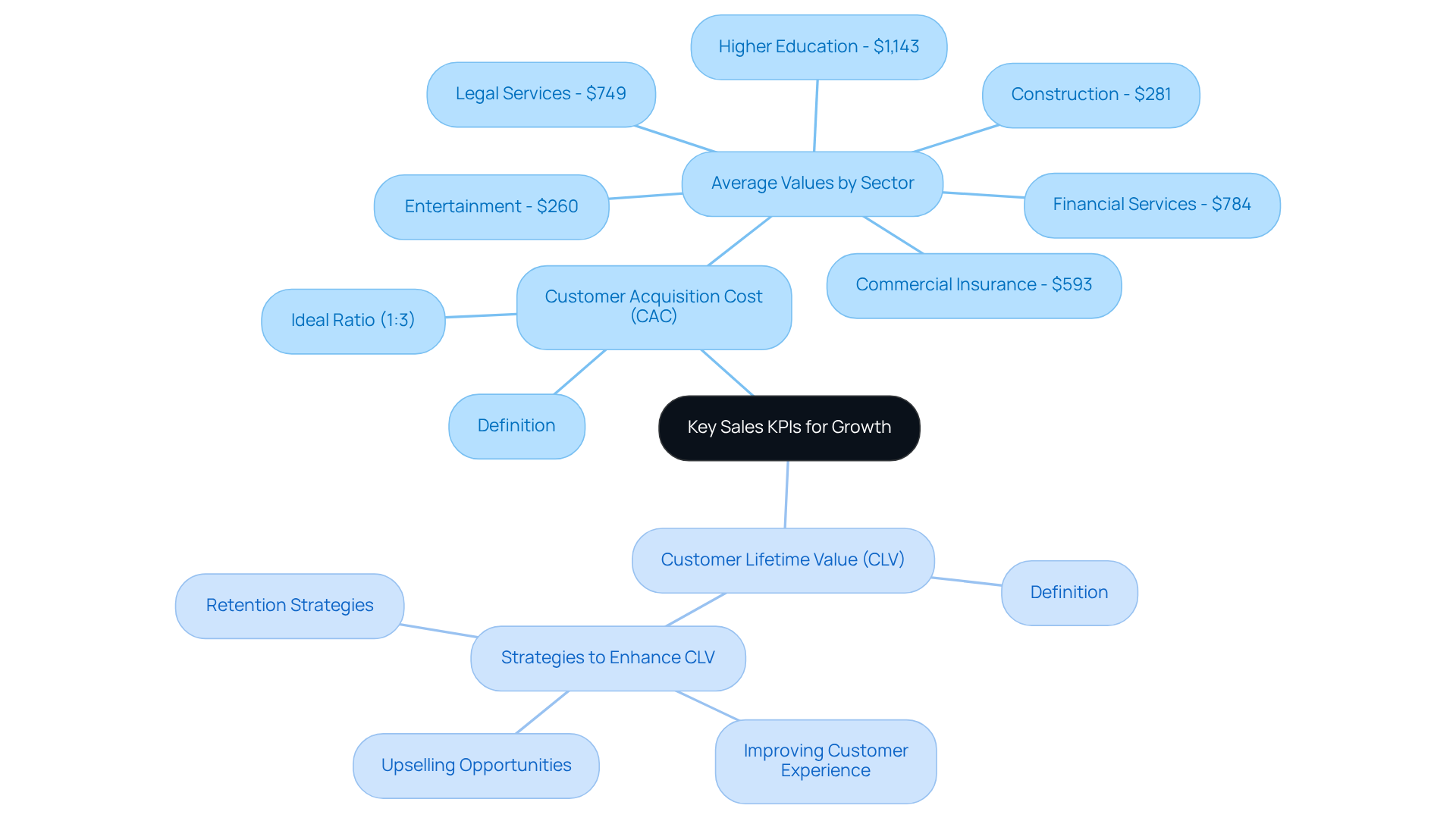
ClearPoint Strategy: 18 Key Performance Indicators for Comprehensive Tracking
At ClearPoint Strategy, we recognize the importance of tracking KPIs for sales that are essential for your organization’s success. Among the 18 vital metrics identified, Net Profit Margin, Return on Investment (ROI), and Employee Productivity truly stand out. By monitoring these KPIs for sales, small enterprise owners like you can gain valuable insights into your operational efficiency and financial health.
Consider the Net Profit Margin; it serves as a crucial gauge of profitability, reflecting how effectively your organization transforms revenue into real profit. Similarly, offers a quantifiable assessment of your sales strategies, helping you understand the financial returns on your investments. Engaging your stakeholders in the KPI development process not only ensures alignment with your overall objectives but also fosters team buy-in, creating a sense of shared purpose.
Moreover, utilizing KPI software can automate data collection and analysis, increasing both efficiency and accuracy in tracking these important indicators. Regular assessments of your KPIs for sales are vital for adapting to your evolving organizational needs, reinforcing the idea of continuous improvement in performance monitoring. By leveraging these indicators, you can make informed strategic adjustments that enhance your overall performance and promote sustainable growth. Remember, together we can achieve success, and understanding these metrics is a significant step in that journey.
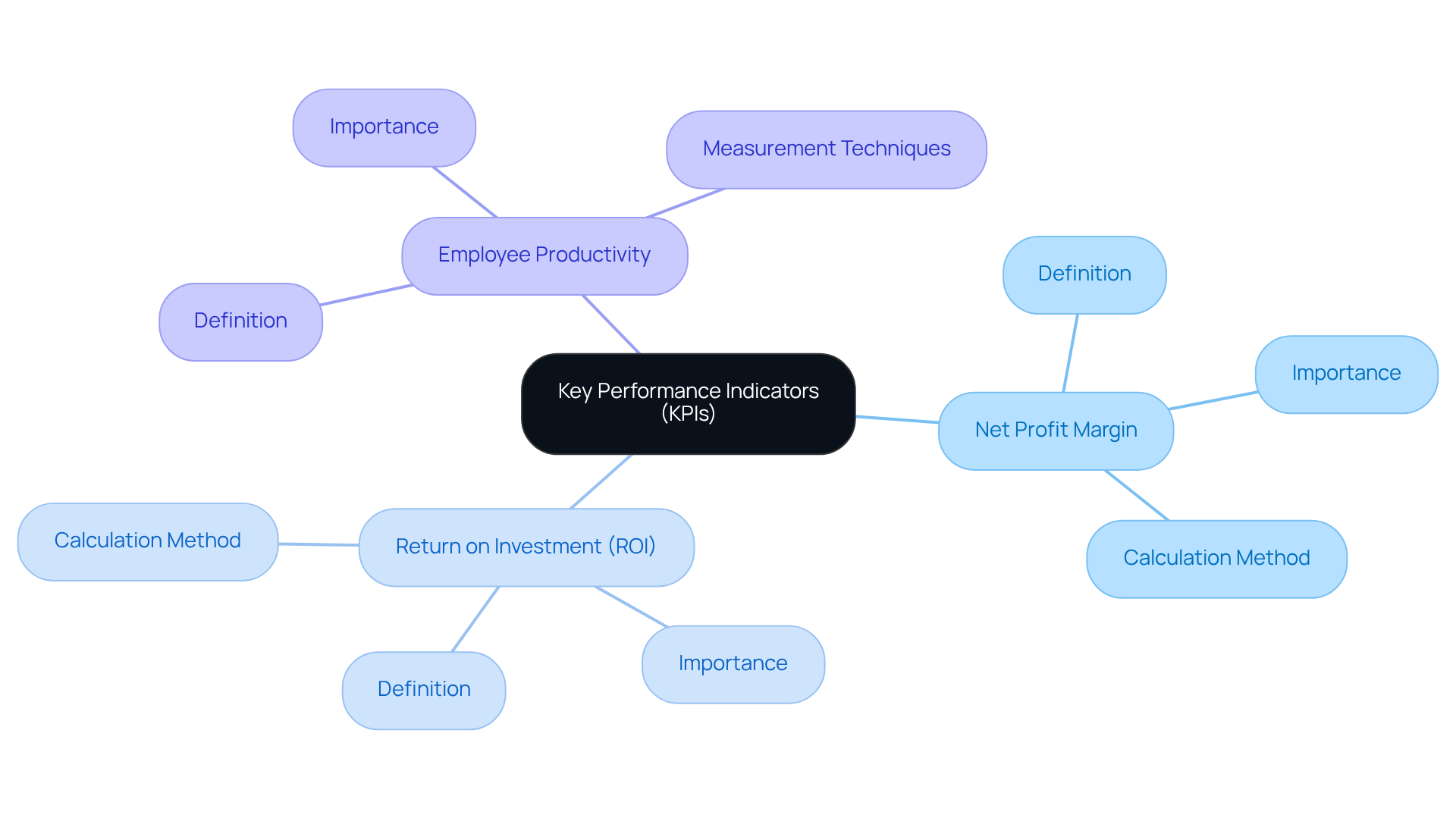
IncentiveSmart: 9 Sales KPIs to Boost Performance
IncentiveSmart identifies nine essential KPIs for sales that can significantly enhance outcomes for small businesses. Metrics like Revenue Per Representative, , and Win Rate are vital for developing KPIs for sales and enhancing sales strategies. Did you know that the typical lead response duration for B2B teams is an astonishing 42 hours? However, replying within just five minutes can enhance the chances of converting leads by as much as 100 times! Moreover, companies that respond within the first hour are seven times more likely to qualify leads, showcasing the critical importance of Lead Response Time in sales efficiency.
Focusing on KPIs for sales, particularly Sales Per Rep metrics, allows small business owners to assess individual performance and set clear expectations. HubSpot achieved a remarkable 98% retention rate in representatives by effectively tracking these individual performance metrics. By consistently evaluating these KPIs for sales, companies can identify obstacles in their revenue processes and implement strategies to improve conversion rates. For instance, the 'Five-Minute Lead Response Rule' has shown that organizations adopting a systematic approach to track these metrics not only enhance their revenue outcomes but also foster a culture of accountability within their teams.
As we look ahead to 2025, the landscape of commerce will continue to evolve. Utilizing these KPIs for sales will be essential for small enterprises aiming to thrive in a competitive environment. Analysts predict that by 2026, 65% of B2B commerce organizations will outpace those relying solely on instinct, emphasizing the importance of data-driven approaches. By aligning their revenue strategies with these KPIs for sales, small business owners can drive higher income and achieve sustainable growth. Together, we can navigate these challenges and work towards success.
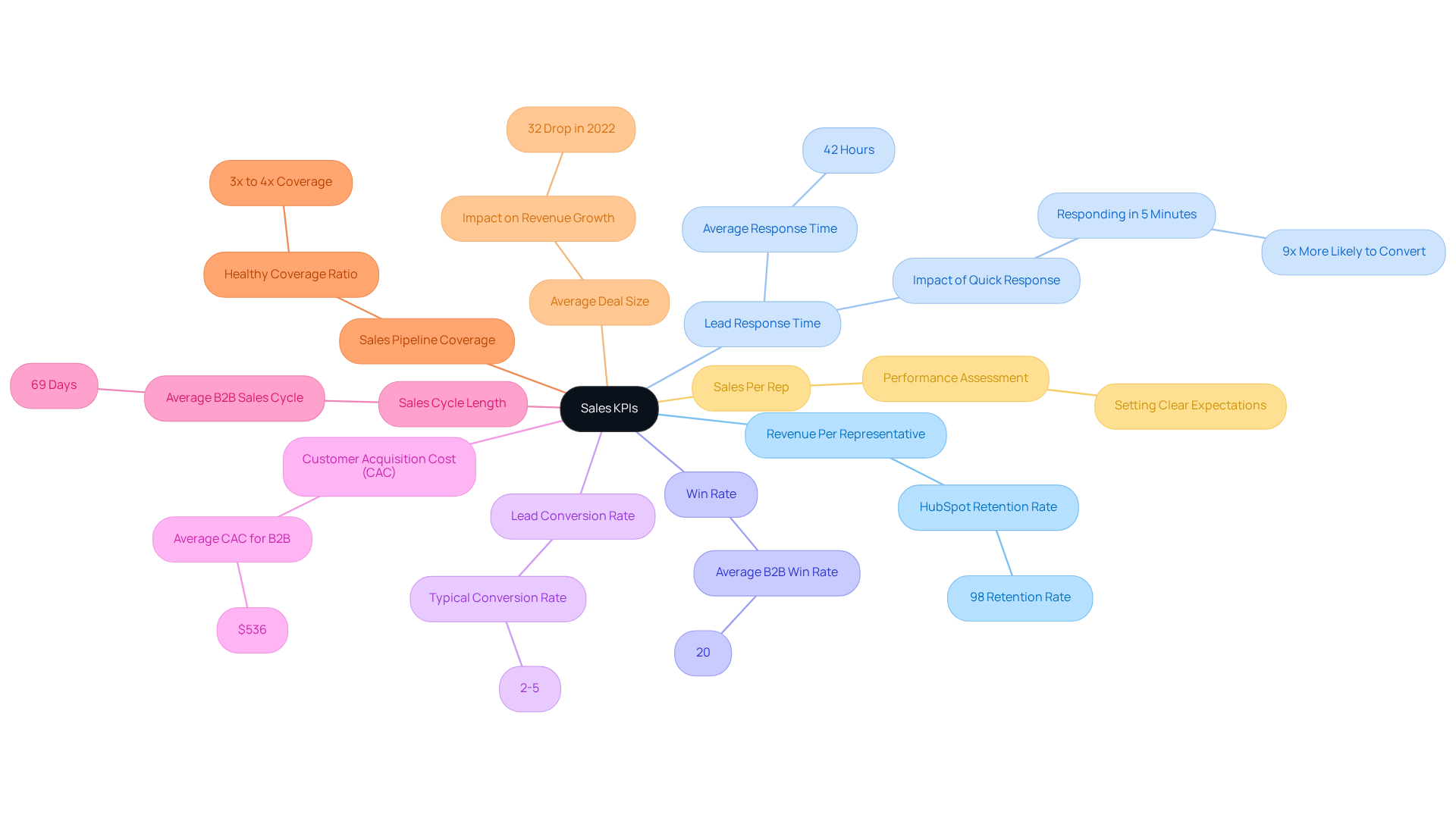
Microsoft Dynamics 365: Understanding Sales Usage Reports and KPIs
Microsoft Dynamics 365 offers comprehensive usage reports that empower emerging enterprises to understand their KPIs for sales. These reports highlight critical metrics such as:
- Opportunity Win Rate
- Average Sales Cycle
- Sales Activity Levels
Understanding the Opportunity Win Rate is crucial, as it reveals the percentage of deals successfully finalized, which plays a vital role in predicting revenue and assessing sales efficiency. Interestingly, statistics show that companies with structured opportunity management processes achieve 43% higher win rates than their competitors. This underscores the importance of tracking this metric.
Additionally, the Average Sales Cycle duration is one of the key KPIs for sales, reflecting the time taken to convert leads into customers. For smaller enterprises, the typical sales cycle usually lasts about 84 days, particularly in the SaaS sector, though this can vary based on the industry and product complexity. By analyzing these KPIs for sales, small business owners can identify trends, optimize their marketing strategies, and ultimately enhance their performance.
In conjunction with these conventional metrics, Wayy.ai provides effective commercial solutions that deliver daily performance insights. With features like one-click sales guides that enable users to swiftly implement effective strategies, and targeted customer profiling that helps identify the most promising leads, small business owners can efficiently monitor leads, interest levels, and improvements in conversion rates. This data-informed approach fosters enhanced client acquisition, ensuring that businesses can adapt their strategies based on real-time feedback.
Case studies reveal that companies leveraging insights from usage reports have experienced significant improvements. For example, a mid-market technology firm that adopted a structured qualification system based on revenue data increased its win rate from 31% to 52% over two quarters. This illustrates how data-informed decisions can lead to substantial growth and efficiency in business operations.
Moreover, it's noteworthy that while 82% of teams assess their success rate, only 23% understand what drives their performance. This statistic emphasizes the need for small business owners to not only track metrics but also effectively evaluate KPIs for sales.
In summary, by utilizing Microsoft Dynamics 365's sales usage reports alongside Wayy.ai's insights, entrepreneurs can make informed, strategic decisions that enhance and drive overall success. Together, we can navigate these challenges and achieve greater heights.
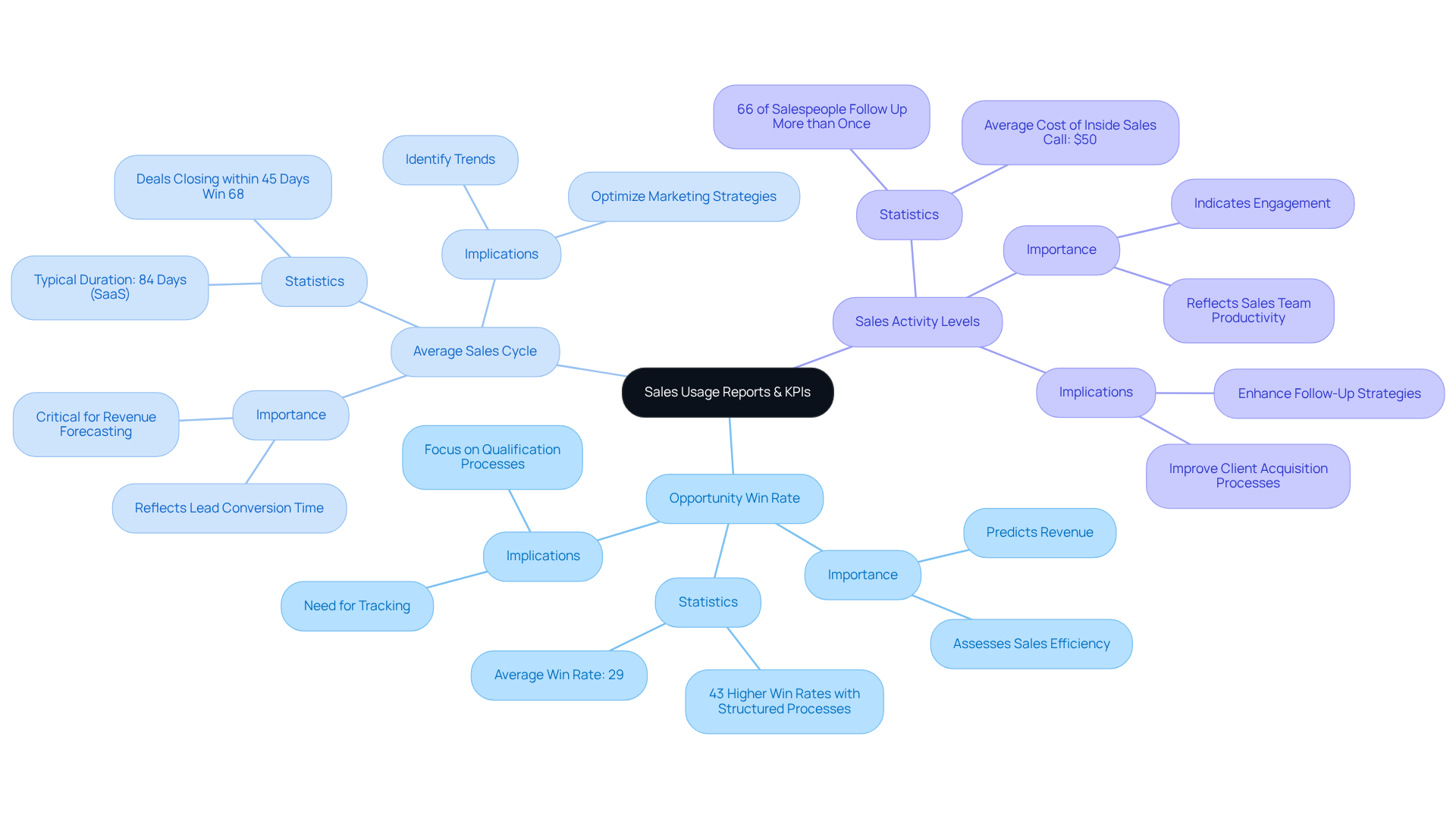
Bizzabo: Key KPIs to Measure Event Success for Small Businesses
Bizzabo understands the essential role of KPIs for sales in evaluating the success of events for small enterprises. Among the vital KPIs are:
Monitoring Registration Numbers is crucial; it provides insights into the reach and allure of an event, allowing organizations to gauge interest levels and adjust their marketing strategies accordingly. Did you know that 92% of attendees expect to participate in more in-person events in 2024? This statistic underscores the importance of effective registration strategies. Moreover, 80% of attendees believe that in-person events are the most trusted way to discover new products and services, further highlighting the value of these gatherings.
Engagement Rates are equally important, reflecting how actively attendees interact during events. For small enterprises, assessing engagement can reveal the impact of content and networking opportunities. On average, smaller enterprise events see engagement rates around 60%, which can be improved through interactive sessions and personalized experiences. Notably, 69% of B2B marketers find in-person events effective, reinforcing their significance on engagement and ROI.
Furthermore, tracking Cost Per Acquisition (CPA) helps organizations understand the financial efficiency of their events. By analyzing these metrics, owners of small enterprises can optimize their marketing strategies, enhance overall ROI, and ensure that their events contribute positively to their growth objectives. As the event landscape evolves, leveraging KPIs for sales will be essential for small enterprises aiming to enhance their influence and achieve success in 2025 and beyond. As Peter Drucker wisely stated, 'If you can’t measure it, you can’t improve it,' emphasizing the importance of monitoring key performance indicators. Together, we can and achieve success.
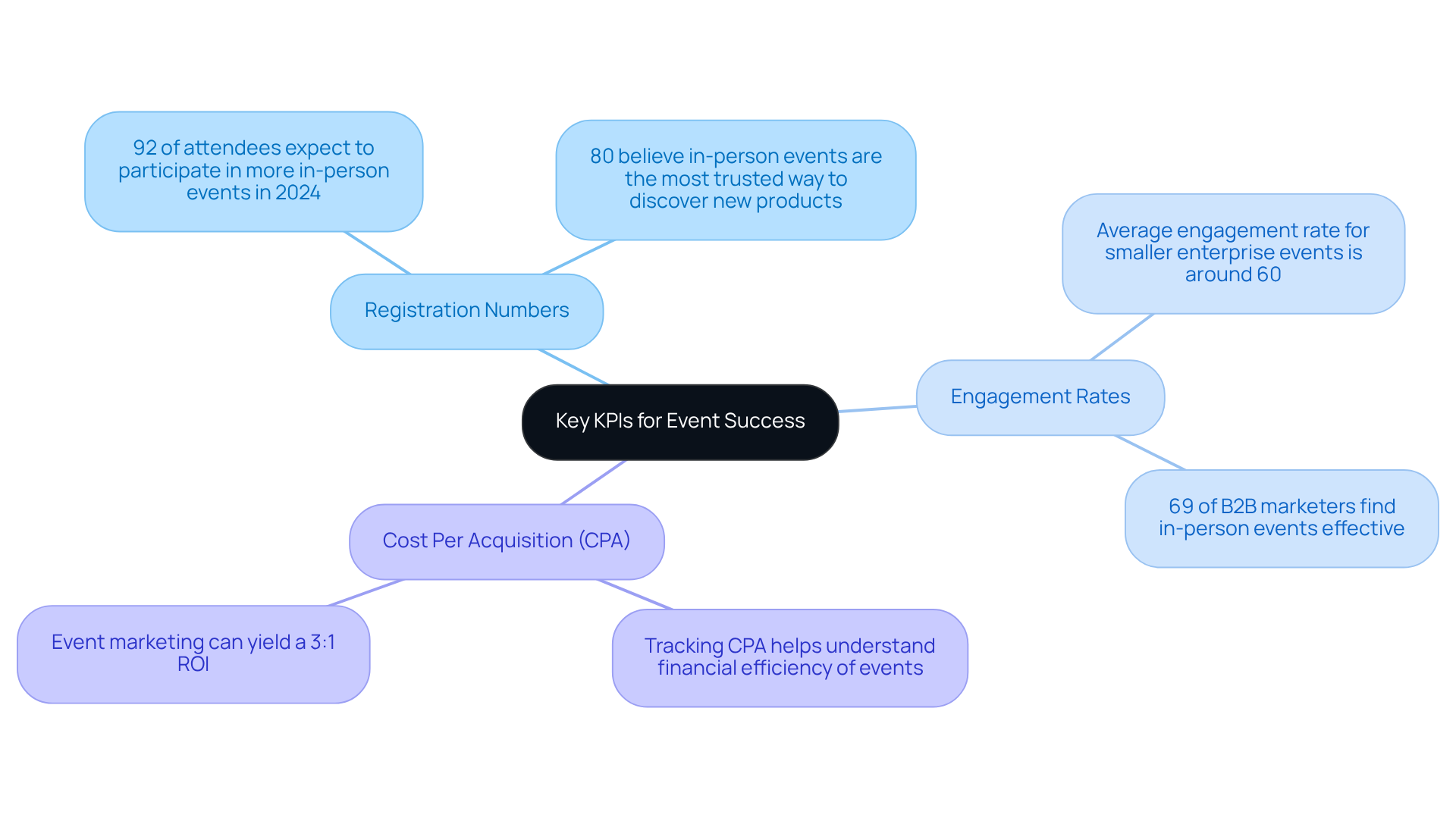
Improvado: Essential Marketing KPIs for Sales Alignment
At Improvado, we understand the vital importance of key marketing indicators in achieving revenue alignment. Metrics such as Marketing Return on Investment (ROI), Customer Acquisition Cost (CAC), and Lead Conversion Rate are essential for small business owners looking to optimize their marketing strategies. For example, understanding CAC is crucial, as it varies significantly across industries; in higher education, the average CAC is $1,143, while the entertainment industry enjoys a much lower average of $260. By effectively monitoring these KPIs, small enterprises can ensure their marketing efforts directly support sales goals, ultimately enhancing overall performance.
Moreover, companies that consistently assess their ROI experience a remarkable 13-fold rise in favorable results compared to those that do not. This emphasizes the significance of incorporating these metrics into daily operations. This strategic alignment not only drives better results but also fosters a culture of accountability and continuous improvement within the organization.
Wayy.ai enhances this process by offering daily email insights that monitor leads, interest, and conversion rates. This enables business owners to see precisely what's effective each day. With its , Wayy.ai provides an affordable solution for small enterprises to effectively manage their marketing and revenue efforts. Together, we can navigate these challenges and achieve success.
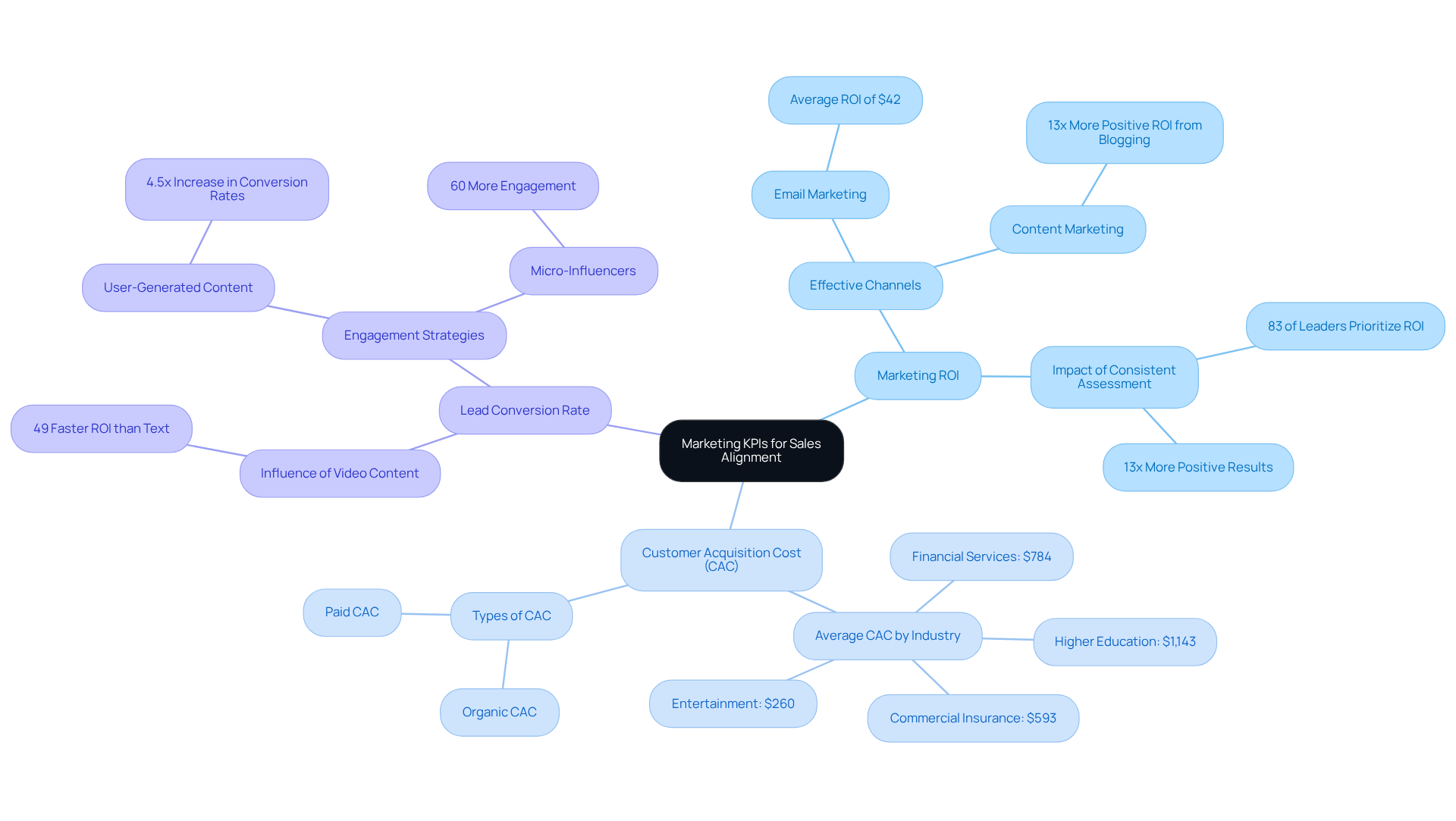
Zendesk: Sales KPIs for Enhanced Customer Support and Sales Integration
Combining revenue KPIs with customer support metrics is essential for small enterprises seeking to improve their overall performance. We understand that as a small business owner, you want to ensure every aspect of your operation contributes to your success. Key performance indicators, such as:
play a vital role in this integration. Tracking CSAT is particularly important, as it measures customer satisfaction with specific interactions, providing valuable insights into service quality. In fact, companies that actively use customer feedback for product improvements see a 10% increase in customer retention rates, which can significantly boost sales performance.
First Response Time is another critical metric; studies show that a swift response can enhance customer satisfaction and loyalty. Small enterprises that uphold an average initial reply time of less than 24 hours are more inclined to keep clients, as 42% of clients anticipate a response on social media within merely 60 minutes. This is a clear indication of how timely communication can foster trust and loyalty. Additionally, Resolution Rate indicates how effectively customer issues are resolved, directly impacting customer perceptions and future purchasing decisions.
Consider the case of a modest e-commerce enterprise that established . They observed their CSAT score improve from 75% to 85% within six months, resulting in a 20% rise in repeat purchases. This illustrates the transformative power of focusing on customer satisfaction. Moreover, platforms like Wayy.ai assist entrepreneurs in optimizing client acquisition and improving their revenue pipeline, allowing them to create over 60 target client connections each month. By concentrating on these KPIs for sales, you can establish a smooth connection between revenue generation and customer assistance, ultimately fostering growth and enhancing client experiences. Together, we can achieve success by prioritizing what truly matters to your customers.
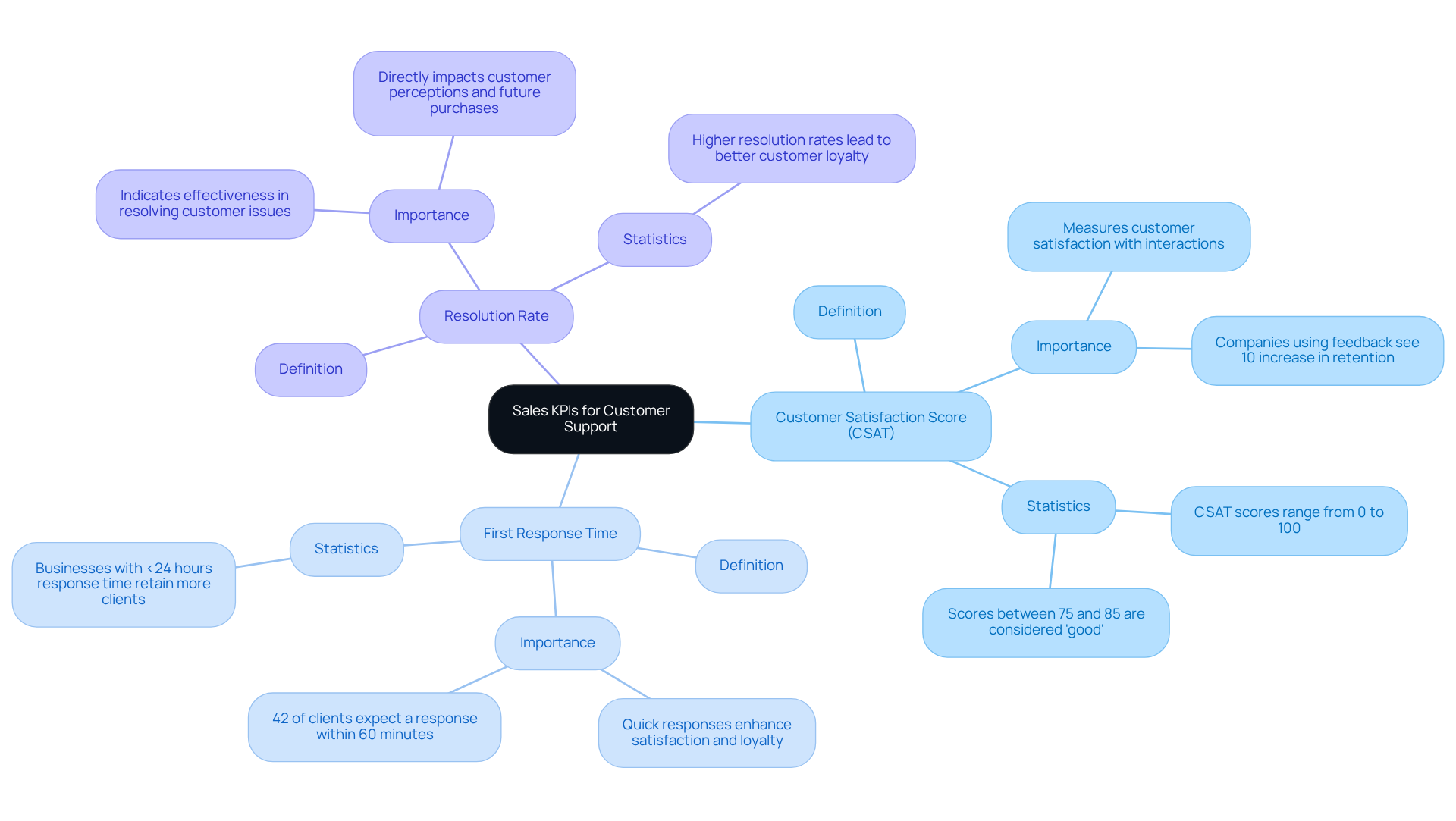
OneUpWeb: Digital Marketing KPIs for Small Business Sales Tracking
OneUpWeb underscores the vital role of monitoring digital marketing metrics for the success of small enterprises. Metrics like Website Traffic, Conversion Rate, and Social Media Engagement offer essential insights into how effective your marketing strategies are. By keeping an eye on these KPIs for sales, owners of small businesses can evaluate their digital marketing efforts and make informed decisions to enhance their revenue strategies.
Did you know that the typical conversion rate for small enterprise websites hovers around 2.35%? Top-performing sites can achieve rates of 11% or higher, providing a clear benchmark for you as a small business owner. Understanding these metrics allows you to identify trends and , leading to better customer engagement and increased revenue. For instance, about 39.1% of consumer-facing (B2C) sites attract between 1,000 and 10,000 monthly visitors, showcasing the potential for small enterprises to draw significant traffic.
Consider the impact of these metrics: Hyundai Netherlands saw a remarkable 62% increase in leads through targeted landing page optimizations. This clearly illustrates the power of tracking and improving conversion rates. Additionally, Wayy.ai empowers users to automate outreach and establish over 60 target client connections monthly, significantly enhancing their revenue pipeline and fostering growth. These connections are crucial for converting leads into customers, reinforcing the importance of utilizing such tools alongside KPI tracking.
As digital marketing continues to evolve in 2025, it’s essential for small business owners to prioritize KPIs for sales in order to remain competitive. By focusing on website visitors and conversion metrics, and implementing strategies like local SEO and targeted advertising campaigns, you can make informed decisions that elevate your overall marketing strategies. Together, we can navigate these challenges and achieve success.
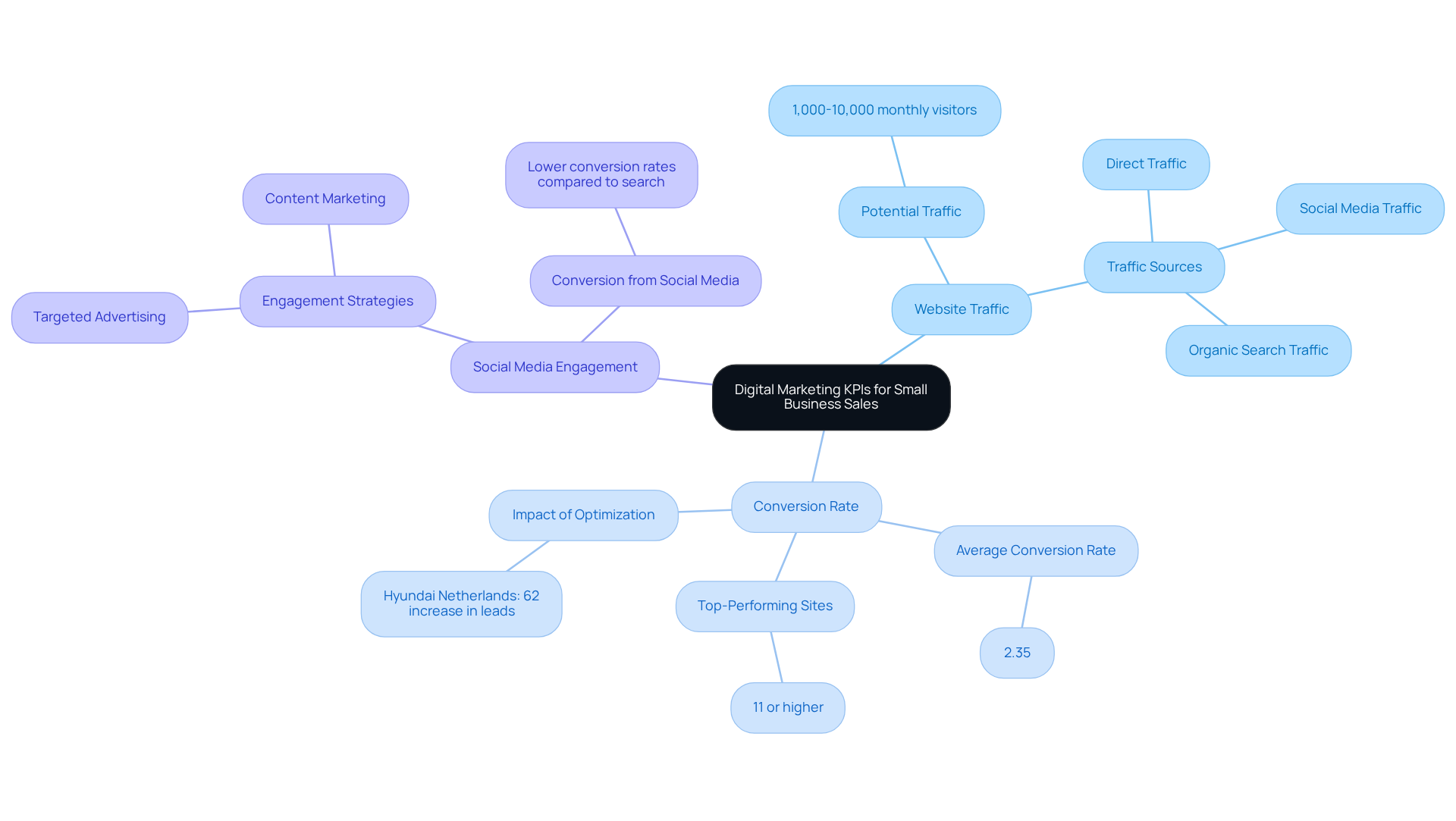
Gong.io: Sales Forecasting KPIs for Accurate Performance Predictions
At Gong.io, we truly understand the vital role that revenue forecasting metrics play in achieving accurate performance predictions. For small entrepreneurs looking to refine their sales strategies, crucial metrics such as:
- Forecast Accuracy
- Pipeline Coverage
- Sales Velocity
are indispensable. By diligently monitoring the KPIs for sales, businesses can uncover valuable insights into their revenue projections. This knowledge empowers informed decision-making, ultimately driving growth.
Consider this: firms that effectively manage their revenue pipelines report a remarkable 28% increase in income growth rates. This statistic underscores the importance of maintaining robust pipeline coverage. Additionally, reliable revenue predictions are paramount; companies with precise forecasts are 10% more likely to experience year-over-year income growth. However, we recognize that small enterprises often face challenges when implementing these performance indicators. In fact, 39% of revenue professionals cite inadequate data quality as a significant barrier to accurate forecasting.
But there’s hope! By harnessing the power of AI, small businesses can enhance data quality and forecasting accuracy, positioning themselves for sustained success in a rapidly changing market. Together, we can and achieve the growth you aspire to.
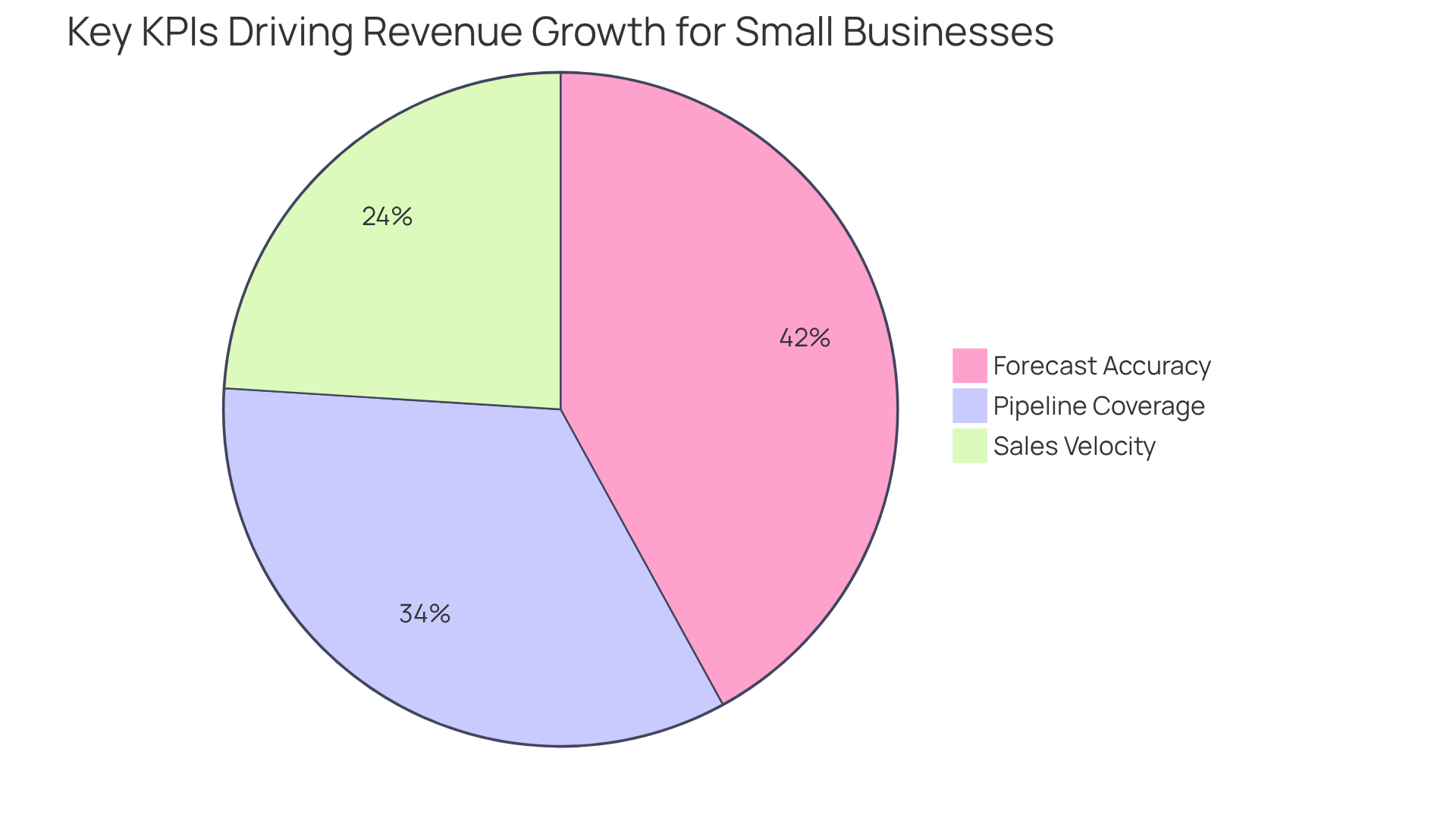
Nytlicensing: Content Marketing KPIs to Support Sales Objectives
At Nytlicensing, we understand how crucial content marketing metrics are for advancing revenue goals, especially for minor enterprises. Essential metrics like Content Engagement Rate, Lead Generation from Content, and Conversion Rate from Content Marketing are pivotal for evaluating the effectiveness of your marketing strategies. Have you ever noticed how actively monitoring your Content Engagement Rate can reveal a direct link with lead generation? In fact, content marketing generates three times as many leads as while costing 62% less. This highlights its importance in your marketing toolkit.
Moreover, many minor enterprises that utilize KPIs for sales have reported significant improvements in their revenue performance. For instance, Wayy.ai empowers users to establish over 60 target client connections each month. This showcases how a focus on content engagement can enhance visibility and foster stronger connections with potential clients. By aligning your content marketing efforts with sales strategies, you can optimize your outreach and ultimately drive more sales.
As we approach 2025, it’s worth noting that 61% of B2B marketers expect an increase in investment in video. This indicates that the focus on KPIs for sales will only grow stronger. It’s essential for emerging enterprises like yours to incorporate KPIs for sales into your marketing strategies to achieve sustained growth. Together, we can navigate these challenges and work towards your success.
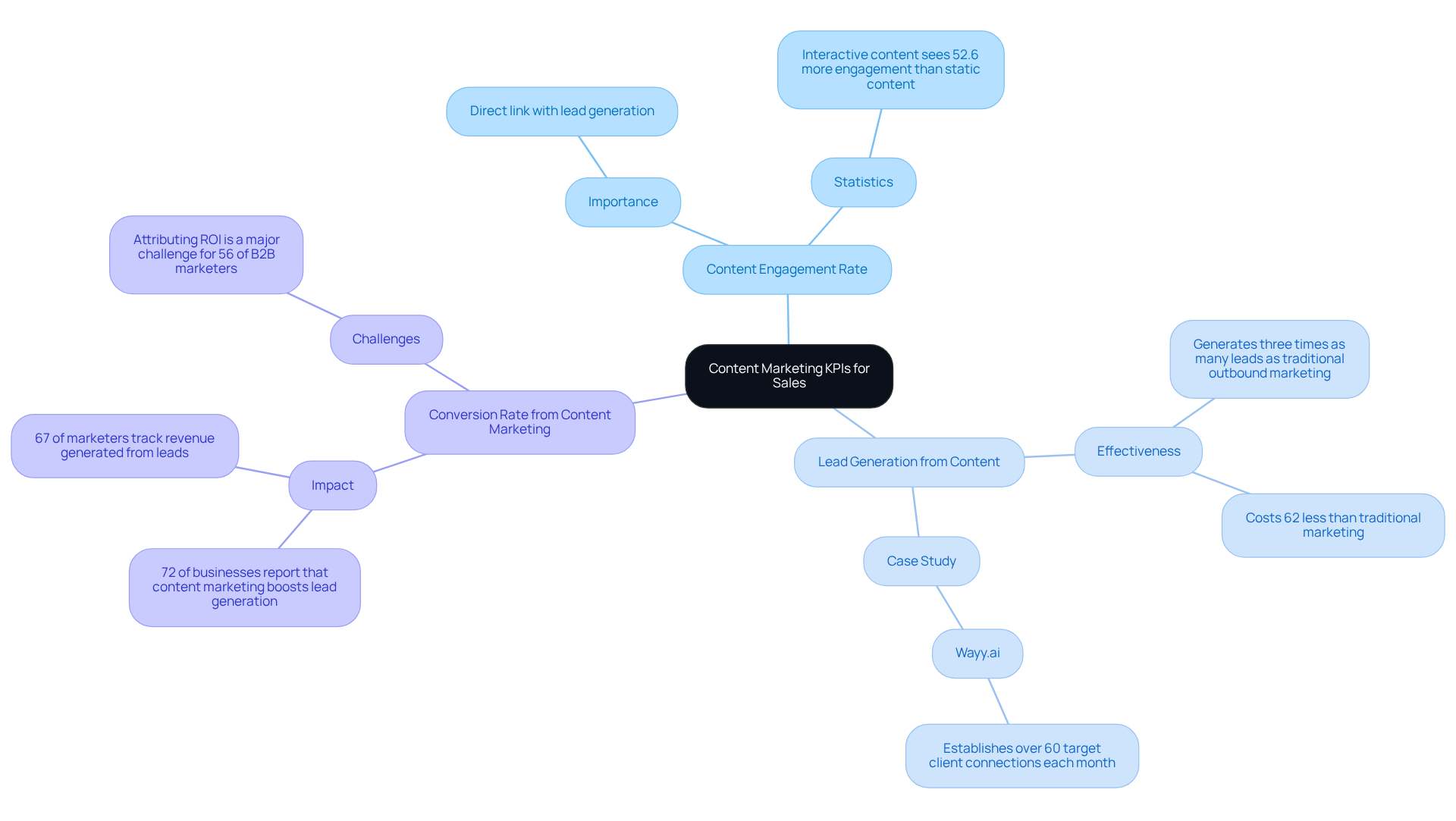
ClearPoint Strategy: Financial KPIs Every Small Business Should Track
At ClearPoint Strategy, we understand the challenges that small enterprises face in achieving sustainable growth and profitability. One crucial financial KPI to monitor is the Net Profit Margin, a vital indicator of your financial health. It reflects the percentage of revenue that remains after all expenses are deducted. Currently, the typical net profit margin for small businesses hovers around 7-10%. This aligns with the suggested profit margin range for all small ventures, underscoring the importance of efficient cost management and pricing strategies.
Another key metric is the Revenue Growth Rate, which indicates how quickly your organization is expanding its sales over a specific period. Small enterprises that maintain a consistent revenue growth rate are better positioned to reinvest in operations and scale effectively. Companies that actively track these metrics often report higher profitability and improved cash flow management. Have you considered how these metrics could impact your business?
Looking ahead to 2025, we also recommend monitoring Operating Cash Flow, which assesses the cash generated from routine operations. This KPI is essential for understanding liquidity and ensuring that your organization can meet its short-term obligations.
Expert insights reveal that consistently monitoring KPIs for sales not only aids in tracking financial performance but also informs strategic planning. As Peter Drucker famously stated, 'What gets measured gets managed.' Mark Cuban further emphasizes the significance of measurement in organizational advancement, stating, 'In operations, what’s measured improves.' By focusing on these key metrics, you can make informed choices that promote growth and enhance your overall financial performance.
With 66% of small businesses facing and 82% failing due to cash flow problems, the importance of these KPIs cannot be overstated. Together, we can navigate these challenges and work towards achieving success.
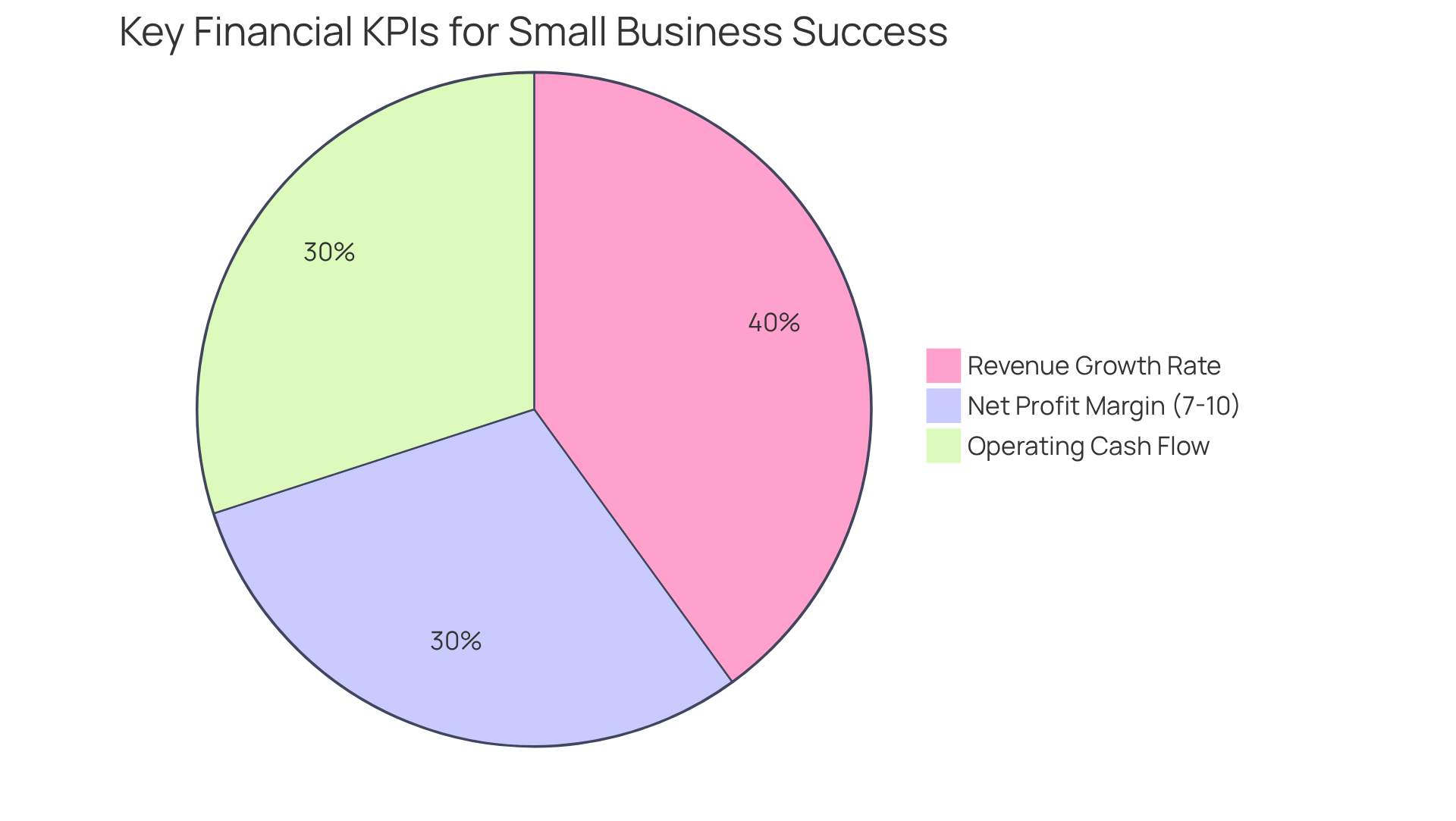
Conclusion
Tracking the right sales KPIs is vital for small businesses aiming for sustainable growth and success. By concentrating on the 21 key performance indicators outlined, small business owners can uncover valuable insights into their sales processes, refine their strategies, and ultimately drive revenue growth. These metrics not only highlight areas for improvement but also empower you to make informed decisions that align with your growth objectives.
Throughout this article, we have highlighted various KPIs, including:
- Customer Acquisition Cost
- Sales Conversion Rate
- Net Profit Margin
Each of these indicators plays a crucial role in understanding sales performance, optimizing client acquisition, and enhancing overall operational efficiency. By regularly monitoring these metrics, small enterprises can identify trends, adapt to market changes, and foster a culture of continuous improvement within their teams.
As the landscape of small business continues to evolve, the importance of leveraging data-driven strategies cannot be overstated. Embracing these sales KPIs equips you with the tools needed to navigate challenges and positions you for long-term success. By prioritizing the measurement and analysis of these key indicators, small businesses can transform their sales trajectories and unlock new opportunities for growth in the competitive market of 2025 and beyond. Together, we can achieve success by taking these essential steps forward.
Frequently Asked Questions
What is Wayy.ai and how does it assist small enterprises?
Wayy.ai is a platform that utilizes advanced AI technology to simplify the client acquisition journey for small enterprises. It offers a comprehensive marketing playbook and execution strategy, helping businesses conduct research, identify value propositions, and create detailed profiles of target customers.
How many potential clients can users connect with each month using Wayy.ai?
Users can connect with over 60 potential clients each month through Wayy.ai, significantly boosting their revenue pipeline without the stress of manual outreach.
What is the significance of AI in small business marketing according to the article?
The article states that 25% of small businesses are already using AI to enhance their marketing efforts, highlighting the growing trend of AI automation in helping businesses refine their revenue strategies and achieve sustainable growth.
What are some key sales KPIs that small enterprises should monitor?
Small enterprises should monitor various sales KPIs, including Monthly Sales Growth, Average Profit Margin, Sales Conversion Rate, Lead-to-Opportunity Conversion Rate, Average Deal Size, and Cycle Length, to evaluate performance and identify areas for improvement.
Why is the Lead-to-Opportunity Conversion Rate important?
The Lead-to-Opportunity Conversion Rate is crucial as it measures how effectively leads are converted into viable business opportunities, which directly impacts revenue growth.
What was the average quota achievement rate for minor enterprise sales groups in 2024?
The average quota achievement rate for minor enterprise sales groups in 2024 was reported at 43.14%.
How can Wayy.ai help in tracking sales KPIs?
Wayy.ai supports local entrepreneurs by providing daily email insights that track leads, interest, and conversion rates, simplifying client acquisition efforts and enhancing revenue performance.
What is one practical tip for calculating lead conversion rates mentioned in the article?
To calculate lead conversion rates, small business owners can divide the number of leads converted into opportunities by the total number of leads and multiply by 100%.
How can monitoring KPIs foster a culture of continuous improvement in sales teams?
Focusing on KPIs for sales helps track progress and encourages a culture of continuous improvement, ultimately leading to sustained success within sales teams.




